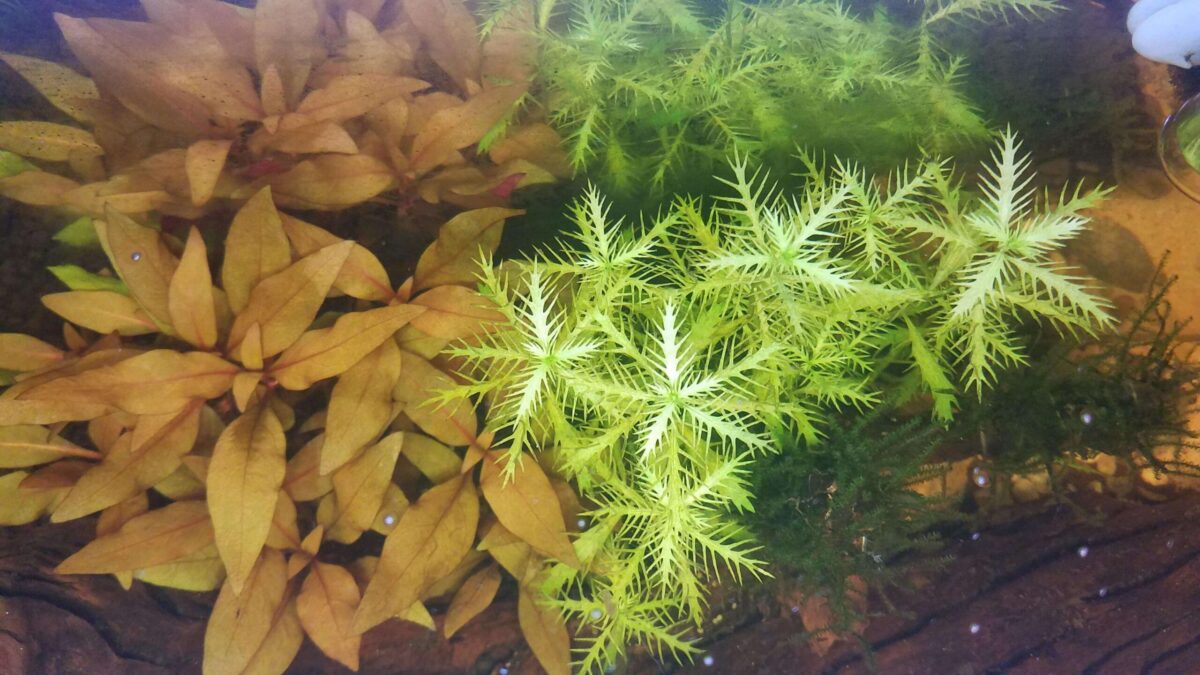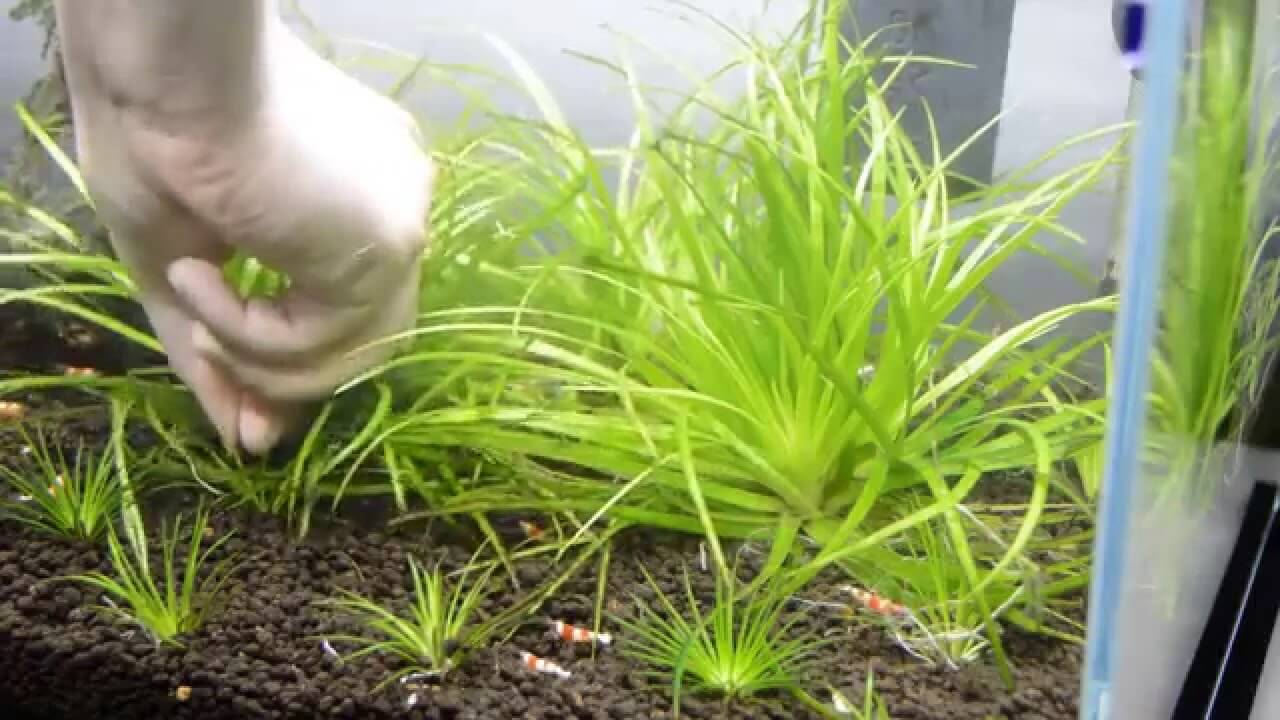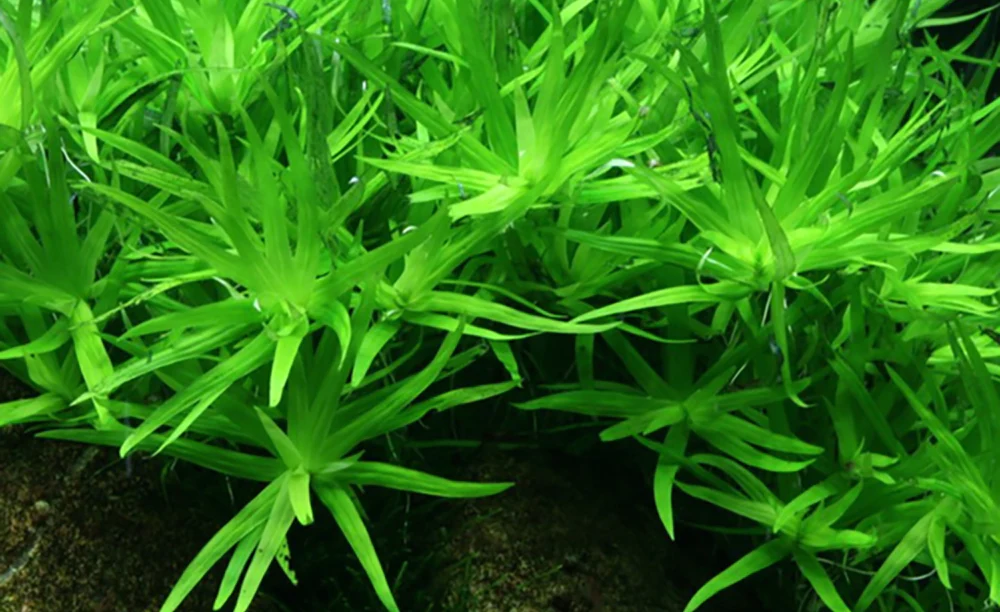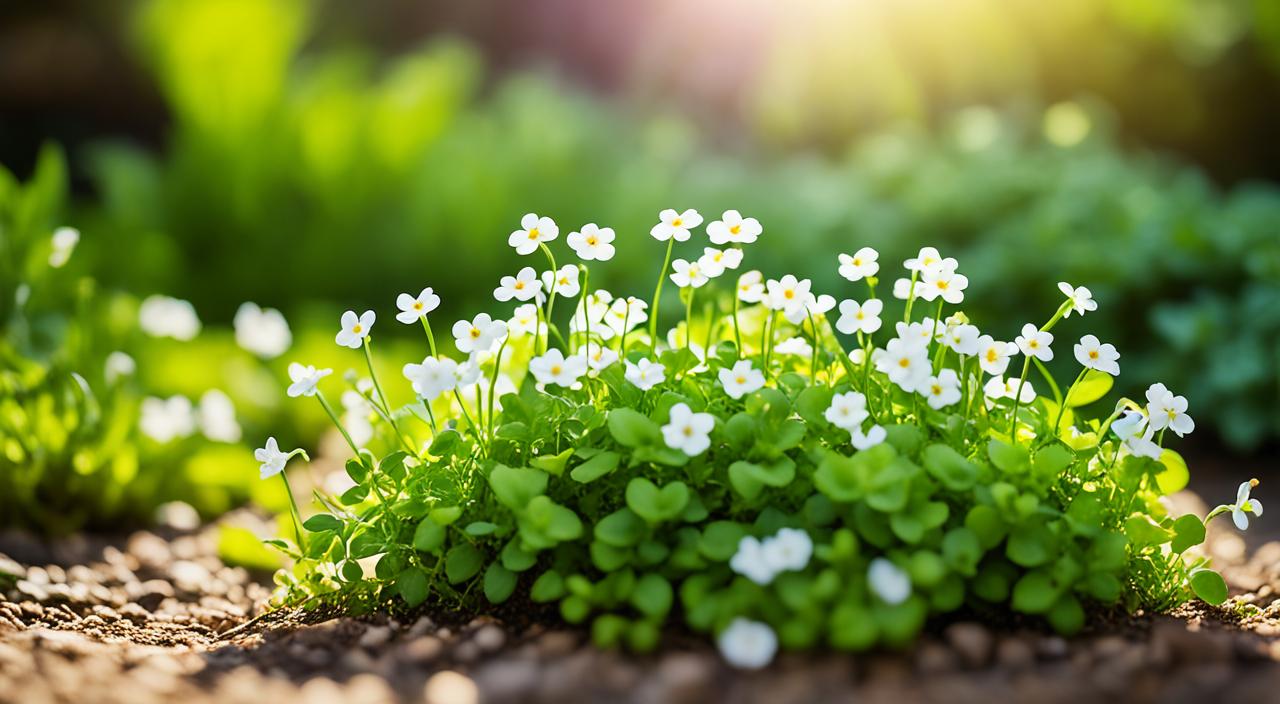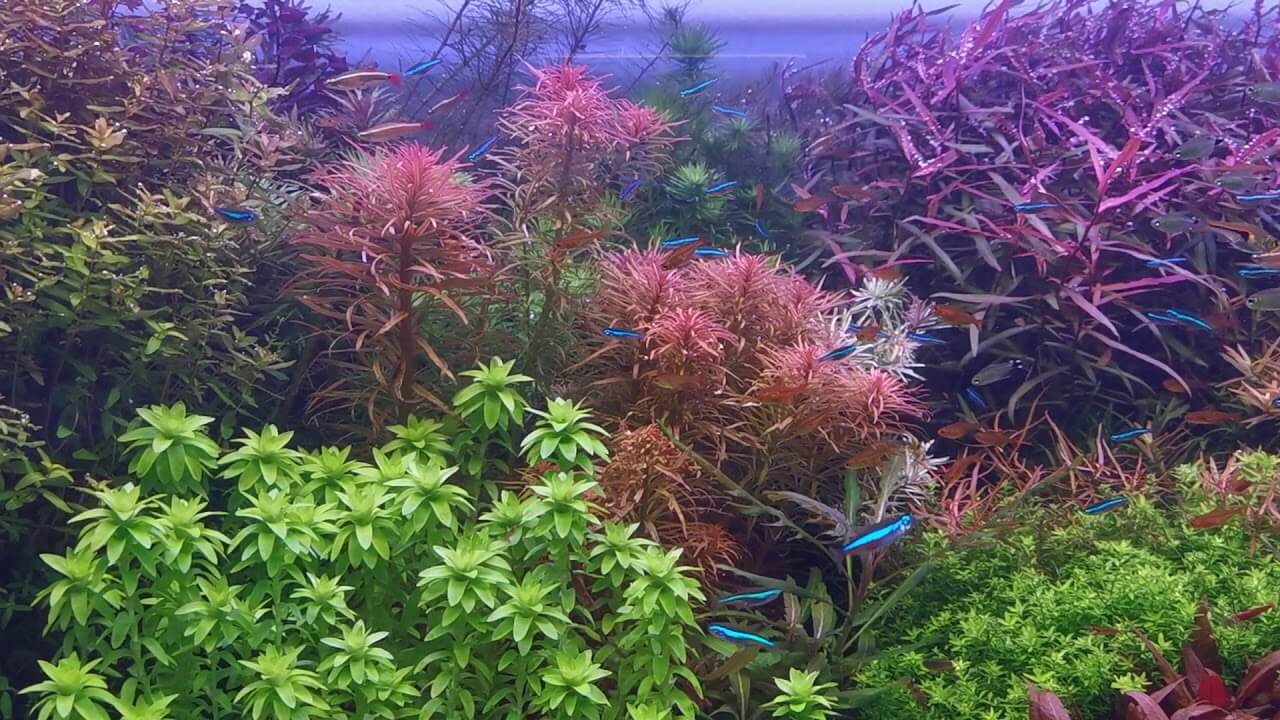Greetings aquarium enthusiasts! If you want to add a touch of elegance and beauty to your freshwater aquarium, look no further than mermaid weed, scientifically known as Proserpinaca palustris. In this comprehensive guide, I will share essential care tips to help you cultivate this stunning aquatic plant in your tank.
Mermaid weed, also known as Proserpinaca palustris, is a captivating stem plant that can reach impressive heights in larger aquarium setups. Its serrated leaves add a unique texture to any aquatic environment, while its colour can range from vibrant greenish hues to captivating orangey-red tones. While not as well-known as other aquatic plants, mermaid weed can be a remarkable addition to your freshwater aquarium.
In this guide, I’ll cover everything you need to know about mermaid weed, from its origins and natural habitat to its morphological characteristics and ideal tank conditions. Whether you’re a seasoned aquarium enthusiast or a beginner, these care tips will ensure that your mermaid weed thrives and becomes the centrepiece of your aquatic oasis.
Key Takeaways:
- Mermaid weed, scientifically known as Proserpinaca palustris, is a captivating stem plant that adds elegance to freshwater aquariums.
- It features serrated leaves and comes in shades of greenish or orangey red.
- Mermaid weed is native to North and South America and thrives in wetland areas with moderate to bright light.
- Proper placement, lighting, and tank mates are essential for the successful cultivation of mermaid weed.
- Feeding, CO2 injection, and regular aquarium maintenance are critical factors in keeping mermaid weeds healthy and vibrant.
Brief Overview Of Mermaid Weed
Mermaid weed, or Proserpinaca palustris, is a stem plant that can grow as tall as large aquariums. It features serrated leaves that give the plant a distinctive appearance. The colour of the plant can range from greenish to orangey red. While it may not be as popular as other aquatic plants, mermaid weed can be a stunning addition to any freshwater aquarium.
Mermaid Weed Information Table:
| Attribute | Description |
|---|---|
| 1. Scientific Name: | Proserpinaca palustris |
| 2. Common Names: | Mermaid Weed, Saw-Tooth Hygro |
| 3. Origin: | North America |
| 4. Height: | 20-50 cm (8-20 inches) |
| 5. Growth Rate: | Medium |
| 6. Colour: | Green in low light, red or copper tones under high light or CO2 supplementation |
| 7. Aquarium Placement: | Midground to Background |
| 8. Water Type: | Freshwater |
| 9. pH: | 6.0-7.5 |
| 10. Care Level: | Moderate to High |
| 11. Light Requirements: | High: 50-70 PAR (Photosynthetically Active Radiation), LUX levels should be around 5000-7000 for optimal colouration and growth, Kelvin scale: 6500K-7000K for promoting healthy growth and vibrant colours. |
| 12. CO2 Requirements: | Recommended for best growth and coloration |
| 13. Temperature: | 18-28°C (64-82°F) |
| 14. Flow Rate: | Moderate to High |
| 15. Propagation: | Cuttings from the main stem or side shoots |
| 16. Feed Type: | Root tabs and liquid fertilizers recommended for nutrient supplementation |
Origins And Habitat
Mermaid weed, scientifically known as Proserpinaca palustris, is a versatile aquatic plant that is native to both North and South America. It thrives in wetland areas and can be found along the edges of ponds, lakes, and streams.
This plant can remarkably adapt to various water conditions, making it suitable for different types of freshwater environments. It prefers moderate to high light levels and nutrient availability to maintain optimal growth and health.
With its origins deeply rooted in the Americas, mermaid weed brings natural beauty and diversity to freshwater aquariums worldwide. Its natural habitat is a testament to its resilience and adaptability, making it a popular choice among aquarium enthusiasts.
Morphological Characteristics
Mermaid weed, also known as Proserpinaca palustris, is a stem plant with distinctive morphological characteristics. It features serrated leaves that add to its visual appeal. The plant has the potential to grow quite tall, reaching a circumference of around 3 to 4 inches at full size.
The leaves of mermaid weed have a sawtooth-like appearance, further enhancing its unique aesthetic. These serrated leaves create an interesting texture and provide an eye-catching focal point in any freshwater aquarium.
The morphology of mermaid weed makes it an excellent choice for aquarists looking to add variety and visual interest to their tank. Its distinct features set it apart from other plants, creating a stunning underwater landscape.
Placement And Lighting
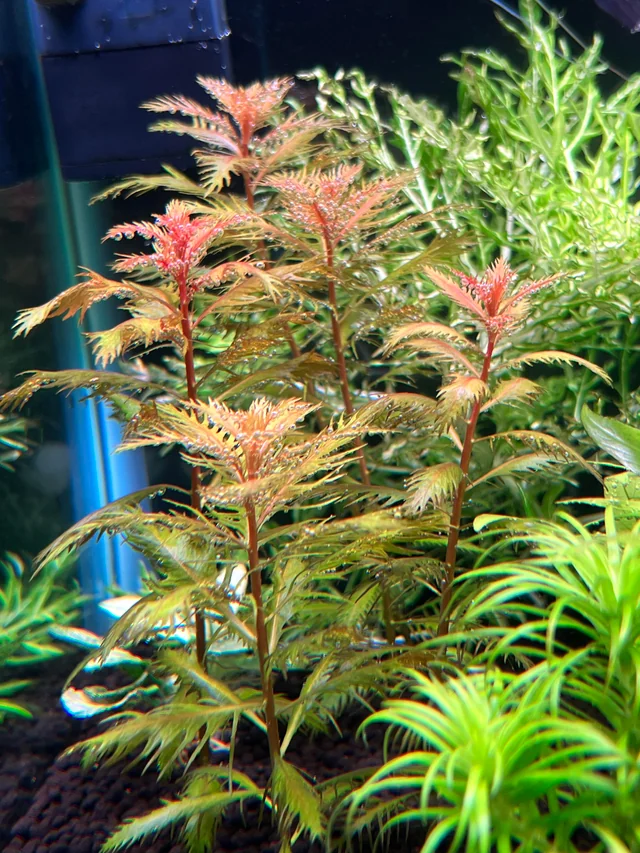
Proper placement and lighting are crucial for the successful growth of mermaid weed. To showcase the vibrant colors of this aquatic plant, it requires intense light with a higher PAR (umols) and a strong red/blue spectrum.
Regarding placement, mermaid weed is best suited for midground or background placement in larger-sized tanks. This is due to its large size when fully matured, and it can create a beautiful visual impact when positioned strategically in the aquarium.
For optimal growth, it is vital to ensure that mermaid weed receives adequate lighting and is placed where it can thrive. Placing the plant in a well-lit area with high-intensity lighting will enhance its overall health and appearance.
Creating the perfect lighting conditions and placing mermaid weed in the right spot will ensure its growth and showcase its stunning beauty in your freshwater aquarium.
What Are Good Tank Mates?
In a freshwater aquarium, it is crucial to consider the compatibility of various fish species with mermaid weed. Some fish can nibble on or uproot the plant, causing damage. On the other hand, specific fish species can coexist harmoniously with mermaid weed.
Good Tank Mates
When choosing tank mates for mermaid weed, it is advisable to select peaceful fish that are less likely to disturb or damage the plant. Here are some compatible fish species that can coexist well with mermaid weed:
- Neon Tetras
- Harlequin Rasboras
- Pygmy Corydoras
- Kuhli Loaches
- Cherry Shrimp
These fish are known for their peaceful nature and are less likely to disturb the roots or foliage of mermaid weed. They can create a harmonious and visually appealing environment in your aquarium.
Fish Species To Avoid
While some fish species can coexist peacefully with mermaid weed, others may cause damage or stress to the plant. It is best to avoid the following fish when keeping mermaid weed:
- Goldfish
- Cichlids
- Barbs
- Gouramis
- Arowanas
These fish are known to be more aggressive or tend to nibble on plants, which can damage the delicate foliage of mermaid weed. Avoiding these species will help ensure the health and well-being of your mermaid weed in the aquarium.
Feeding (Fertilization)
How Much And How Often To Feed
Feeding mermaid weed is crucial for its healthy growth and vibrant appearance. Like all aquatic plants, mermaid weed relies on a steady supply of nutrients to thrive. To provide optimal fertilization for mermaid weed, it is essential to consider both the quantity and frequency of feeding.
When it comes to the amount of food to provide, a general guideline is to offer enough nutrients to meet the plant’s requirements without overfeeding. It is recommended to start with a small amount and observe how the plant responds. Increase the feeding gradually if needed, but avoid excessive fertilization, which can lead to nutrient imbalance and potential algae growth.
The feeding frequency largely depends on the aquarium’s condition and the mermaid weed’s growth rate. In most cases, a weekly or bi-weekly feeding regimen is sufficient. This allows the plant to absorb the necessary nutrients and prevents the accumulation of excess nutrients in the water. However, individual plant requirements may vary, so monitoring the plant’s health and adjusting the feeding schedule is crucial.
Feeding mermaid weed is a critical component of its care routine. Providing the right amount of nutrients at the appropriate intervals ensures that your mermaid weed thrives and adds a vibrant touch to your freshwater aquarium.
CO2 Injection
CO2 injection is a crucial aspect of promoting the healthy growth of aquatic plants, including mermaid weed. This process aids photosynthesis and supplies plants with carbon, an essential nutrient. To ensure the optimal development of mermaid weed in your freshwater aquarium, CO2 supplementation is highly beneficial. In this section, I will explore the significance of CO2 injection for mermaid weed and discuss different CO2 injection methods.
Types
There are several types of CO2 injection methods available to aquarium hobbyists. Each method has its benefits and considerations. Let’s take a look at some popular types of CO2 injection:
- Pressurized CO2 System: This method involves using a pressurized CO2 cylinder, a regulator, and a diffuser. The CO2 gas is released into the aquarium water through the diffuser, allowing for efficient absorption by the plants. Pressurized CO2 systems offer precise control over CO2 levels and are often preferred for larger aquariums or those with high-demand plants.
- DIY Yeast CO2 System: A DIY yeast CO2 system is a budget-friendly alternative for smaller aquarium setups. This method utilizes a mixture of yeast, sugar, and water in a homemade reactor to produce CO2. The CO2 is then diffused into the aquarium water. While DIY yeast CO2 systems may require more frequent maintenance, they can still provide adequate CO2 supplementation for mermaid weed in smaller setups.
- CO2 Liquid Carbon Supplements: Liquid carbon supplements, such as glutaraldehyde-based products, offer an alternative to gas-based CO2 injection. These supplements provide a source of readily available carbon for plant growth. However, liquid carbon supplements are typically less effective in high-demand planted tanks and may be more suitable for low to medium-light setups or aquariums with low-tech plants.
When choosing a CO2 injection method for your freshwater aquarium, it’s essential to consider the specific needs of your plants, tank size, budget, and level of maintenance you’re comfortable with. Proper CO2 supplementation can significantly enhance the growth and vitality of mermaid weed and other aquatic plants in your aquarium.
Care
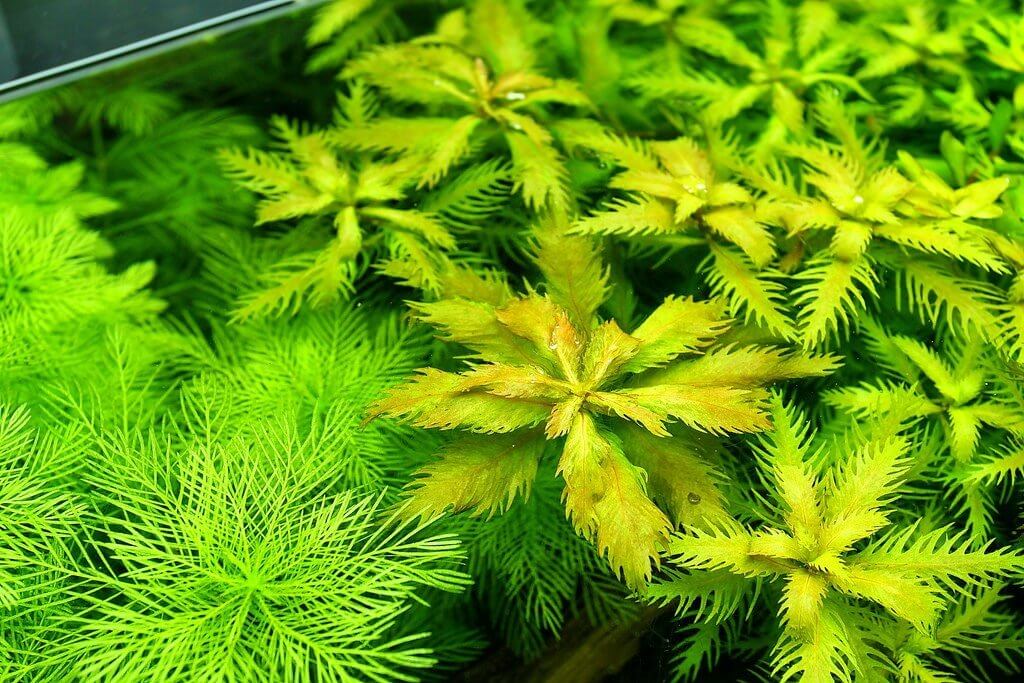
Planted Tank Parameters
Creating the ideal environment for mermaid weed in your planted tank is essential for its growth and overall health. Here are some key parameters to consider:
- Lighting: Mermaid weed thrives in moderate to high light conditions. Provide at least 2-3 watts per gallon of light for optimal growth.
- Temperature: Maintain a temperature range of 72-82°F (22-28°C) to ensure the plant remains healthy.
- pH: Mermaid weed prefers slightly acidic to neutral water conditions, with a pH range of 6.0-7.5.
- Substrate: Use nutrient-rich substrates or add root tabs to provide essential nutrients for the plant’s root system.
- Circulation: Adequate water circulation helps distribute nutrients throughout the tank and prevents stagnant areas.
Water Quality
Ensuring proper water quality is vital for the well-being of mermaid weed. Consider the following factors:
- Ammonia and Nitrite Levels: Keep ammonia and nitrite levels at zero to prevent harm to the plant.
- Nitrate Levels: Maintain nitrate levels below 20 ppm through regular water changes and proper filtration.
- Hardness: Mermaid weed prefers slightly soft to moderately hard water, with a general range of 4-10 dKH.
- CO2 Levels: Providing adequate carbon dioxide (CO2) supplementation can enhance the growth of mermaid weed.
Filtration
An efficient filtration system is crucial for maintaining water quality and removing waste particles. Consider the following filtration options:
- Canister Filters: Canister filters provide excellent mechanical and biological filtration, ensuring a healthy environment for mermaid weed.
- Sponge Filters: Sponge filters are gentle and provide biological filtration without causing excessive water flow.
- Power Filters: Power filters offer mechanical and chemical filtration, removing debris and chemicals from the water.
Flow
Proper water flow is vital for maintaining oxygen levels and distributing nutrients to mermaid weed. Consider the flow requirements:
- Medium Flow: Mermaid weed thrives in a tank with moderate water flow. Avoid strong currents that may uproot the plant.
- Placement: Positioning the plant in an area with moderate flow, such as the midground or background, ensures optimal growth.
Aquarium Maintenance
Regular aquarium maintenance is crucial for ensuring the health and longevity of your mermaid weed. By taking care of essential aspects such as testing water conditions, setting up your aquarium tank correctly, and using appropriate propagation methods, you can create an ideal environment for your mermaid weed to thrive.
Testing Water Conditions
Testing water conditions is essential to maintaining an optimal aquatic environment for mermaid weed. It allows you to monitor critical parameters such as pH, ammonia, nitrite, and nitrate levels. Regularly testing these parameters will enable you to identify any imbalances or deviations from the ideal conditions and take appropriate measures to rectify them.
Ensure you use reliable water testing kits or equipment to obtain accurate results. This will help you make informed decisions about any necessary adjustments to your water parameters, such as pH regulation or nutrient supplementation.
How To Set Up Your Aquarium Tank
The proper setup of your aquarium tank plays a crucial role in optimizing the growth and health of your mermaid weed. Follow these steps to ensure a suitable environment:
- Please choose the right tank size: Mermaid weed can grow quite tall, so selecting a tank with sufficient vertical space is essential.
- Provide appropriate lighting: Mermaid weed requires intense light with a solid red/blue spectrum. Invest in high-quality or fluorescent LED lights to provide the ideal lighting conditions.
- Install a quality filtration system: A reliable filtration system helps maintain water quality by removing waste, toxins, and excess nutrients. Consider using a combination of mechanical, biological, and chemical filtration for optimal results.
- Establish a consistent water flow: Mermaid weed benefits from moderate water movement. Use an aquarium pump or powerhead to create a gentle flow that promotes nutrient distribution and oxygenation.
- Add suitable substrate: Choose a substrate that supports plant growth and provides essential nutrients. A nutrient-rich substrate like aquatic soil or clay-based substrate can promote healthy root development.
By correctly setting up your aquarium tank, you can create a conducive environment for mermaid weed to flourish and thrive.
Propagation Methods
Propagation allows you to expand your mermaid weed population and create a lush and vibrant aquariumscape. Here are some standard methods for propagating mermaid weed:
- Stem Cutting: Take healthy stem cuttings from the matured mermaid weed plants and replant them in the substrate. Ensure that the cuttings have enough leaves and root nodes for successful propagation.
- Side Shoots: Mermaid weed produces side shoots naturally. Once these shoots have developed their leaves, carefully detach them from the main plant and replant them in the substrate.
- Plant Division: Over time, mermaid weed can form dense clumps. To propagate through plant division, carefully separate the clump into individual plants, ensuring each section has a sufficient root system, and replant them.
When propagating mermaid weed, it’s crucial to maintain appropriate water conditions, lighting, and nutrient levels to ensure the success of the new plants.
By following proper aquarium maintenance practices, such as testing water conditions, setting up your aquarium tank correctly, and utilizing effective propagation methods, you can ensure the health and vitality of your mermaid weed. With continued care and attention, your mermaid weed will thrive and become a beautiful centrepiece in your freshwater aquarium.
Health And Disease
Maintaining the health of mermaid weed is crucial for its longevity. In this section, I will discuss various aspects related to the health and disease management of mermaidweed, including signs of good health, poor health, joint health issues and treatment, and plant pests that may affect this aquatic plant.
Signs Of Good Health
Keeping an eye out for signs of good health in your mermaid weed is essential to ensure its well-being. Healthy mermaid weed has vibrant, lush green foliage and strong stems. The leaves should be intact and free from discolouration, spots, or holes. Also, healthy mermaid weed will have robust root systems that securely anchor the plant in the substrate.
Signs Of Poor Health
Determining signs of poor health in mermaid weed is crucial in identifying potential issues and taking appropriate action. Common signs of poor health include yellowing or browning leaves, wilting or drooping foliage, stunted growth, and root rot. If you notice any of these signs in your mermaid weed, it may indicate nutrient deficiencies, improper lighting, or underlying health problems.
Common Health Issues And Treatment
Several common health issues can affect mermaid weed. Nutrient deficiencies, such as nitrogen, phosphorus, and iron, can lead to poor growth and discolouration of leaves. Poor lighting conditions, inadequate CO2 levels, and improper water parameters can also contribute to the decline in the health of mermaid weed. To address these issues, it is vital to provide the necessary nutrients through proper fertilization, ensure adequate lighting and CO2 supplementation, and maintain optimal water parameters for the plant’s needs.
Plant Pests
Like any other aquatic plant, mermaid weed can be susceptible to plant pests. Common pests affecting mermaid weed include algae, snails, and other invertebrates. Algae can compete with mermaid weed for nutrients and light, leading to poor growth. If left unmanaged, snails can feed on the plant’s leaves, causing damage. It is crucial to implement effective pest control measures, such as manual removal, introducing natural predators, or using appropriate treatments, to keep these pests under control and maintain the health of your mermaid weed.
| Plant Pests | Impact on Mermaid Weed | Treatment Methods |
|---|---|---|
| Algae | Competes for nutrients and light, inhibiting growth |
|
| Snails | Feeds on the leaves, causing damage |
|
Summary
Throughout this comprehensive guide, we have explored the fascinating world of mermaid weed, also known as Proserpinaca palustris. This stunning stem plant, native to North and South America, can be a beautiful addition to your freshwater aquarium.
To cultivate a thriving mermaid weed, it is crucial to consider several factors. Proper placement and lighting are essential, as this plant thrives under intense light with a higher PAR and a solid red/blue spectrum. Additionally, it is crucial to choose suitable tank mates to prevent damage to the plant.
Feeding and fertilization play a significant role in the growth and health of mermaid weed. Regular nutrient availability is necessary to ensure its vibrant appearance. CO2 injection can enhance the development of this aquatic plant, promoting photosynthesis and providing essential carbon.
Maintaining appropriate water parameters, quality, filtration, and flow are paramount when it comes to care. Regular aquarium maintenance, including testing water conditions and using effective propagation methods, will contribute to the long-term success of mermaid weed in your freshwater aquarium.
By following these care tips and considering the specific needs of mermaid weed, you can create a thriving underwater environment, showcasing the beauty of Proserpinaca palustris. Remember to monitor its health, address any issues promptly, and enjoy the stunning display of this aquatic plant in your aquarium.
FAQ
What are some important care tips for mermaid weed in a freshwater aquarium?
To ensure the successful cultivation of mermaid weed, it is important to provide it with the right conditions. This includes providing moderate to high light levels, nutrient availability, and appropriate placement in the tank. It is also beneficial to supplement CO2 for enhanced growth. Regular aquarium maintenance, including testing water conditions and proper care, is essential for the overall health of mermaid weed.
Where is mermaid weed native to?
Mermaid weed, scientifically known as Proserpinaca palustris, is native to North and South America. It can be found in wetland areas and along the edges of ponds, lakes, and streams.
What are the morphological characteristics of mermaid weed?
Mermaid weed is a stem plant with serrated leaves, giving it a unique appearance. The plant can grow quite tall, reaching a circumference of around 3 to 4 inches when fully matured.
Where is the best placement for mermaid weed in an aquarium? What are the lighting requirements?
Mermaid weed is best suited for midground or background placement in larger-sized tanks due to its size when matured. It requires intense light, preferably with a higher PAR (umols) and a strong red/blue spectrum to bring out its vibrant colors.
What are some good tank mates for mermaid weed?
Some good tank mates for mermaid weed include peaceful fish species that do not nibble on or uproot the plant. Small tetras, rasboras, and gouramis are often compatible with mermaid weed. However, it is important to avoid fish species that may cause potential conflicts or damage to the plant.
How often should I feed mermaid weed?
Mermaid weed, like other aquatic plants, requires nutrient availability for healthy growth. It is recommended to feed mermaid weed regularly, providing it with essential fertilizers and nutrients. The frequency and quantity of feeding will depend on the specific needs of your aquarium and the growth rate of the plant.
Is CO2 supplementation necessary for mermaid weed?
CO2 injection can be beneficial for promoting the growth of aquatic plants, including mermaid weed. It helps with photosynthesis and provides carbon, which is an essential nutrient for plants. While not strictly necessary, CO2 supplementation can enhance the growth and overall health of mermaid weed in a freshwater aquarium.
How should I care for mermaid weed in my freshwater aquarium?
Proper care for mermaid weed includes maintaining ideal parameters for a planted tank, ensuring proper water quality, choosing the right filtration system, and providing appropriate flow for optimal growth. Regular aquarium maintenance, including testing water conditions, setting up the tank correctly, and utilizing propagation methods, is also essential for maintaining the health and longevity of mermaid weed.
What are some common health issues that can affect mermaid weed?
Common health issues that can affect mermaid weed include nutrient deficiencies, algae overgrowth, and plant pests. It is important to monitor the signs of good health, recognize signs of poor health, and take appropriate measures to address any health problems that may arise.
Can mermaid weed be propagated in a freshwater aquarium?
Yes, mermaid weed can be propagated in a freshwater aquarium. It can be propagated through stem cuttings, which can be replanted to encourage the growth of new plants.
What are the key takeaways for caring for mermaid weed in a freshwater aquarium?
The key takeaways for caring for mermaid weed include providing the right conditions such as light, nutrients, and CO2 supplementation, choosing compatible tank mates, and maintaining proper aquarium maintenance. Monitoring water conditions, addressing health issues promptly, and utilizing propagation methods are all important aspects of maintaining a thriving Proserpinaca palustris in your freshwater aquarium.

